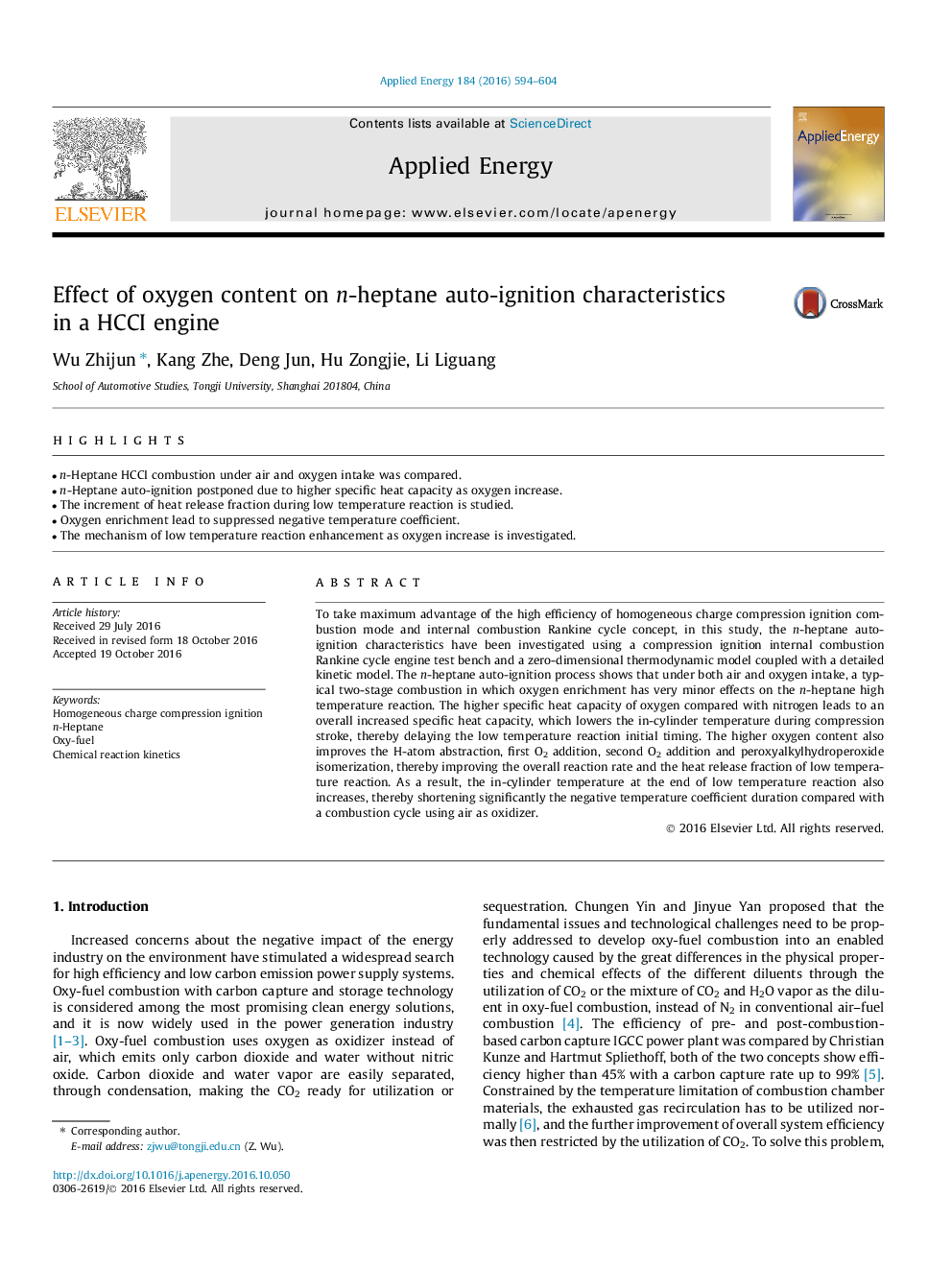| Article ID | Journal | Published Year | Pages | File Type |
|---|---|---|---|---|
| 4916894 | Applied Energy | 2016 | 11 Pages |
Abstract
To take maximum advantage of the high efficiency of homogeneous charge compression ignition combustion mode and internal combustion Rankine cycle concept, in this study, the n-heptane auto-ignition characteristics have been investigated using a compression ignition internal combustion Rankine cycle engine test bench and a zero-dimensional thermodynamic model coupled with a detailed kinetic model. The n-heptane auto-ignition process shows that under both air and oxygen intake, a typical two-stage combustion in which oxygen enrichment has very minor effects on the n-heptane high temperature reaction. The higher specific heat capacity of oxygen compared with nitrogen leads to an overall increased specific heat capacity, which lowers the in-cylinder temperature during compression stroke, thereby delaying the low temperature reaction initial timing. The higher oxygen content also improves the H-atom abstraction, first O2 addition, second O2 addition and peroxyalkylhydroperoxide isomerization, thereby improving the overall reaction rate and the heat release fraction of low temperature reaction. As a result, the in-cylinder temperature at the end of low temperature reaction also increases, thereby shortening significantly the negative temperature coefficient duration compared with a combustion cycle using air as oxidizer.
Related Topics
Physical Sciences and Engineering
Energy
Energy Engineering and Power Technology
Authors
Wu Zhijun, Kang Zhe, Deng Jun, Hu Zongjie, Li Liguang,
